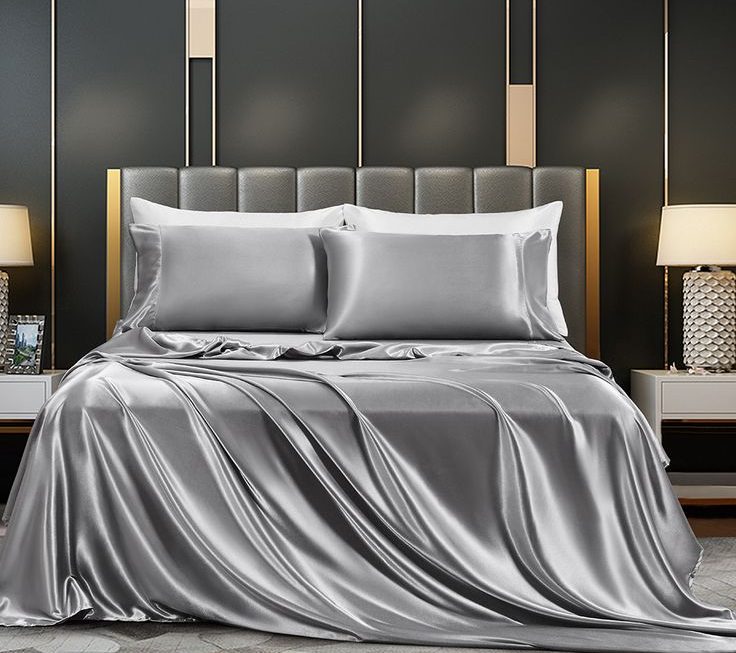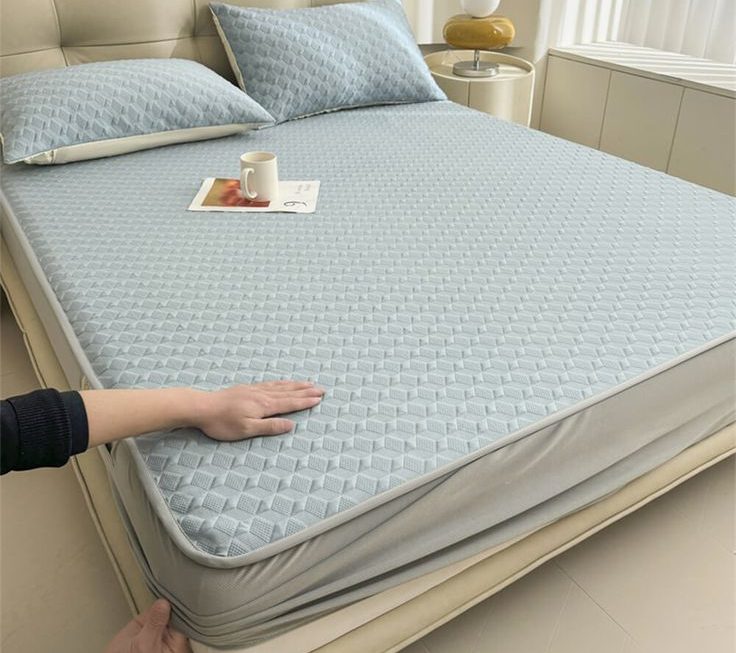Rust stains on your carpet can be a frustrating problem, but they are not impossible to resolve. These stains can result from metal furniture legs, tools, or other rusted items coming into contact with your carpet. This comprehensive guide will walk you through various methods to successfully remove rust from your carpet. We will discuss the materials you need, detailed steps for each cleaning method, and preventative measures to stop future rust stains.
Some common materials used for carpets:
Natural Fibers:
Wool:
Description: Soft, durable, and resistant to stains and dirt.
Features: Natural insulating properties and luxurious feel.
Cotton:
Description: Soft and comfortable but less durable than other materials.
Features: Often used in area rugs and throws.
Sisal:
Description: Made from agave plant fibers, durable, and eco-friendly.
Features: Has a rough texture, ideal for high-traffic areas.
Jute:
Description: Made from plant fibers, provides a natural and rustic look.
Features: Soft but not very durable, best for low-traffic areas.
Synthetic Fibers:
Nylon:
Description: Highly durable and resistant to wear and stains.
Features: Good for high-traffic areas and comes in many colors.
Polyester:
Description: Soft and resistant to fading.
Features: Less durable than nylon but often more affordable.
Olefin (Polypropylene):
Description: Stain and moisture-resistant, good for both indoor and outdoor use.
Features: Durable and less expensive, but can be less comfortable.
Acrylic:
Description: Synthetic alternative to wool, resistant to moisture and mildew.
Features: Soft and colorful, not as durable as nylon.
Triexta:
Description: Newer synthetic fiber similar to nylon.
Features: Highly durable, stain-resistant, and sustainable.
These materials offer a range of options to suit different needs, whether you’re looking for durability, comfort, aesthetics, or budget-friendly choices.
Understanding Rust Stains
What Causes Rust Stains?
Oxidation: Rust forms when iron or steel items are exposed to moisture and oxygen, causing a chemical reaction known as oxidation. This reaction creates reddish-brown stains that can easily transfer to carpet fibers.
Common Sources: Common sources of rust stains on carpets include metal furniture legs, leaky pipes, and outdoor tools.
Why are Rust Stains Difficult to Remove?
Chemical Reaction: Rust is a stubborn stain because it involves a chemical reaction that attaches the iron particles to the carpet fibers.
Time: The longer a rust stain sits on the carpet, the more it bonds with the fibers, making it harder to remove.
 Materials You’ll Need
Materials You’ll Need
Before you start, gather the following materials to effectively remove rust from your carpet:
- White vinegar
- Lemon juice
- Baking soda
- Dishwashing detergent
- Clean white cloths or paper towels
- Soft-bristled brush or toothbrush
- Sponge
- Vacuum cleaner
- Butter knife or spoon
- Commercial rust remover (optional)
Method 1: Using White Vinegar and Baking Soda
Step-by-Step Instructions
- Blot the Stain: Start by blotting the rust stain with a dry white cloth or paper towel to remove any loose rust particles. Avoid rubbing, as this can push the rust deeper into the carpet fibers.
- Apply White Vinegar: Pour a small amount of white vinegar directly onto the rust stain. The acid in the vinegar will help break down the rust.
- Sprinkle Baking Soda: Sprinkle baking soda generously over the vinegar-soaked stain. The mixture will fizz, indicating that it’s working on the rust.
- Wait and Brush: Allow the mixture to sit for about 30 minutes. Then, use a soft-bristled brush or toothbrush to gently scrub the stain.
- Rinse and Blot: Dampen a clean sponge with water and blot the area to remove the vinegar and baking soda mixture. Continue blotting with fresh water until the residue is gone.
- Dry the Area: Use clean, dry cloths or paper towels to blot excess moisture. You can also use a fan or hairdryer to speed up the drying process.
Repeat if Necessary
If the stain persists, repeat the process until the rust is completely removed. Some stubborn stains may require several applications.
 Method 2: Lemon Juice and Salt
Method 2: Lemon Juice and Salt
Step-by-Step Instructions
- Blot the Stain: Use a dry white cloth or paper towel to blot the rust stain and remove any loose particles.
- Apply Lemon Juice: Squeeze fresh lemon juice directly onto the rust stain. The citric acid in the lemon juice acts as a natural rust remover.
- Sprinkle Salt: Sprinkle salt over the lemon juice. The abrasive nature of salt helps in scrubbing away the rust.
- Let it Sit: Allow the lemon juice and salt mixture to sit for about 15-20 minutes.
- Gently Scrub: Use a soft-bristled brush or toothbrush to gently scrub the stained area, working the lemon and salt into the carpet fibers.
- Rinse: Use a damp sponge to blot the area and remove the lemon juice and salt mixture.
- Dry the Area: Blot the area with clean, dry cloths or paper towels to remove excess moisture. Use a fan or hairdryer to speed up the drying process if needed.
Repeat if Necessary
As with any stain removal method, you might need to repeat the process if the rust stain is particularly stubborn.
Method 3: Commercial Rust Removers
Step-by-Step Instructions
- Read the Instructions: Start by reading the manufacturer’s instructions on the commercial rust remover product you have chosen. It’s crucial to follow these guidelines for safety and effectiveness.
- Test in an Inconspicuous Area: Before using the product on the rust stain, test it on a small, hidden area of the carpet to ensure it doesn’t cause discoloration or damage.
- Apply the Rust Remover: Once you’ve confirmed it’s safe, apply the commercial rust remover directly to the rust stain as per the instructions.
- Let it Sit: Allow the product to sit for the recommended amount of time. This typically ranges from a few minutes to longer, depending on the product.
- Gently Scrub: Use a soft-bristled brush or toothbrush to scrub the area gently, working the rust remover into the stain.
- Rinse and Blot: Dampen a sponge with water and blot the area to remove the rust remover. Continue blotting with fresh water until all residue is gone.
- Dry the Area: Blot with clean, dry cloths or paper towels to remove excess moisture. Use a fan or hairdryer for faster drying if necessary.
Repeat if Necessary
For particularly stubborn rust stains, you may need to repeat the application process.
Preventing Future Rust Stains
Use Protective Barriers
Furniture Pads: Place protective pads or coasters under metal furniture legs to prevent rust from forming and transferring to the carpet.
Rugs and Mats: Use rugs or mats in areas where metal items are frequently placed to provide a barrier between the items and the carpet.
 Regular Maintenance
Regular Maintenance
Check for Leaks: Regularly check for leaks or water damage that could contribute to rust forming on metal items in your home.
Clean Metal Surfaces: Regularly clean and dry metal surfaces to prevent the formation of rust.
Prompt Attention
Immediate Cleaning: If you notice rust-forming, address it immediately to prevent it from setting into the carpet fibers.
Professional Carpet Cleaning
When to Call a Professional
Stubborn Stains: If you’ve tried multiple methods and the rust stain persists, it might be time to call a professional carpet cleaner.
Extensive Damage: When the rust stain covers a large area or multiple spots, professional help can ensure a thorough cleaning.
Benefits of Professional Cleaning
Advanced Techniques: Professional cleaners have access to specialized equipment and cleaning solutions that can effectively remove stubborn stains.
Expert Knowledge: Professionals have the expertise to handle various types of stains and carpet materials, ensuring your carpet is cleaned without damage.
Time-Saving: Hiring professionals saves you time and effort, allowing you to focus on other tasks while they handle the cleaning.
 Conclusion
Conclusion
Removing rust from your carpet doesn’t have to be a daunting task. With the right materials and methods, you can successfully tackle rust stains and restore your carpet to its original condition. Whether you choose household solutions like white vinegar, baking soda, and lemon juice or opt for commercial rust removers, consistency and patience are key. Additionally, taking preventative measures can help you avoid future rust stains. If all else fails, professional carpet cleaning is always an option to ensure your carpet remains clean and fresh.




